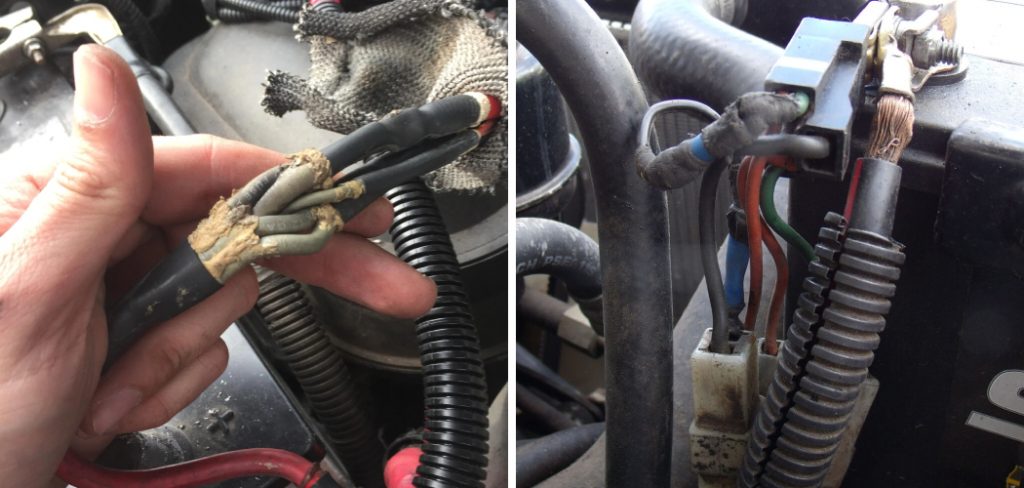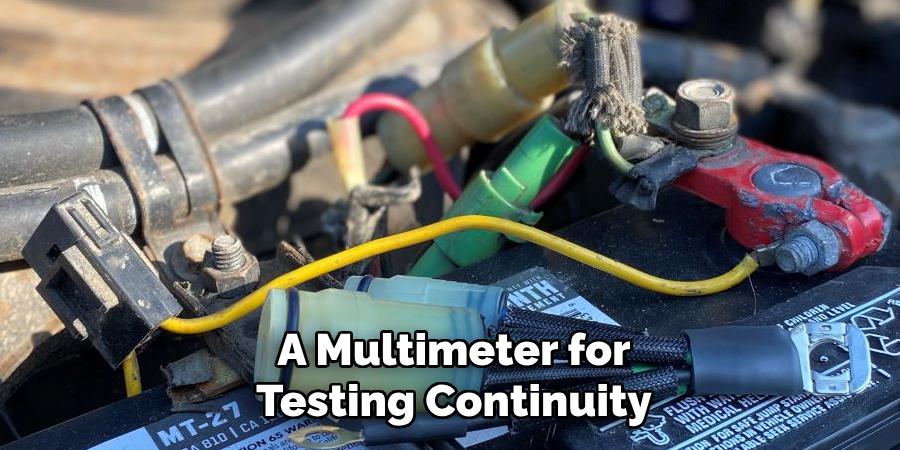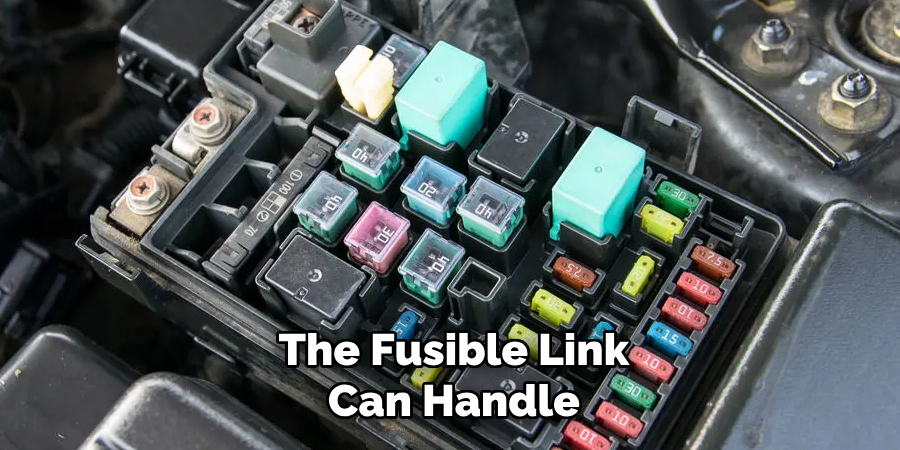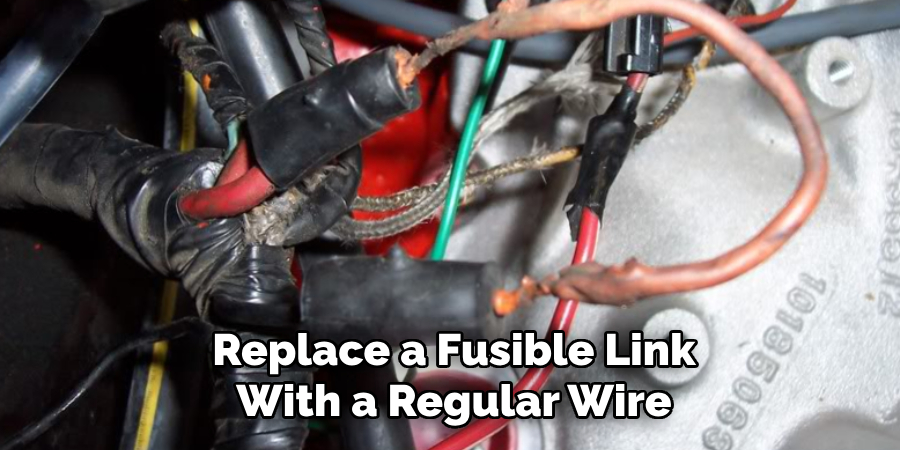Cars are complex systems with several components that work together seamlessly to ensure smooth operation. For amateur car enthusiasts and those just starting to learn about automotive DIY, the term “fusible link” might seem too technical. However, understanding what a fusible link is and how to test a bad fusible link acts as the first line of defense when you’re dealing with electrical issues in your vehicle.

In this comprehensive guide, we will walk you through everything you need to know about fusible links, from their basic definition to practical testing methods that you can perform in your own garage. Let’s dive in and demystify these critical components of your car’s electrical system.
What is a Fusible Link?
A fusible link is essentially a protective device in an automotive electrical system. It is a short insulated low-voltage cable within the larger fuse that protects a circuit. The link is designed to handle the load of the specific circuit it protects but will “melt” or break when the current exceeds the rated capacity, just like a regular fuse.
Fusible links are typically found near the battery or in high-amperage circuits of your car, ensuring that in the event of a power surge, the rest of the electrical system remains unharmed.
When a fusible link fails, it signals that there might be other significant issues within the electrical system. Therefore, testing and identifying a bad fusible link is a valuable skill for any car owner.
Signs of a Bad Fusible Link
Fusible links are not components you actively interact with or check daily, so it’s important to recognize when one may be damaged. Here are some common symptoms of a failed fusible link:
- One or More Electrical Components Don’t Work: If the link has failed, the circuit it protects will no longer work.
- Electrical Oddities: This includes anything from strange noises coming out of your speakers to lights that flicker.
- The Fusible Link Appears Visibly Damaged: This is a clear sign that the link has ruptured and no longer serves its purpose.
Testing isn’t just about fixing a problem after it’s occurred; it’s also about learning to recognize these signs to prevent issues before they cause a breakdown.
How to Test a Bad Fusible Link: A Guide for DIY Enthusiasts
Testing a fusible link is a straightforward process. Here’s a step-by-step guide to help you identify if it’s the source of your car’s electrical woes:
Step 1: Gather the Necessary Tools
For this task, you will need:
- A multimeter for testing continuity
- In specific cases, you might need to squeeze the end of the fusible link to see if it feels like a piece of metal inside, indicating that the link is still operational.

Step 2: Identify the Fusible Link
Before starting any tests, it’s vital to know where the fusible link is located. This can be in a fuse box under the hood or near the battery. You can refer to your car’s user manual or a repair guide for its specific location.
Step 3: Visual Inspection
With the engine off, carefully inspect the fusible link. Look for any signs of physical damage, such as a melted or burned section. If you find any apparent damage, this is a strong indicator that the link has blown.
Step 4: Perform a Continuity Test
Set your multimeter to the continuity or resistance setting. Place one end of the multimeter probe on one end of the link and the other probe on the other end. If the fuse shows continuity, the circuit is operating correctly, as the multimeter will beep or show zero resistance. If it doesn’t beep, this means the fusible link has ruptured.
Step 5: Analyze the Results
If you find that the fusible link has ruptured, this could indicate several things, including a malfunction in the circuit it protects, corrosion on the link, or an overloaded circuit. Remember, a blown fusible link isn’t the problem; it’s the symptom. Dig deeper to find and fix the root cause.
Common Issues and Troubleshooting
Understanding the potential issues that result in a bad fusible link can help you troubleshoot the problem effectively. Here are the common culprits behind failed fusible links, along with troubleshooting tips:
- Blown Fusible Link: If the link is blown, you must fix the underlying issue causing the electrical short or overload. After fixing the problem, you can replace the link.
- Corrosion or Losemust Connections: Over time, corrosion and loose connections can compromise the integrity of the link. Thoroughly clean the area and ensure all connections are tight and secure.
- Overloaded Circuit: If an accessory is drawing more current than the fusible link can handle, consider installing a higher-rated fusible link or if the component is malfunctioning and needs repair or replacement.

Remember, troubleshooting aims not just to replace the fusible link but to understand why it failed in the first place.
Preventive Maintenance
Like many aspects of car care, preventive maintenance can help you avoid the headache of a bad fusible link.
- Regular Visual Inspections: Make it a habit to look for signs of damage on the fusible link whenever you’re working under the hood. If you see anything amiss, address it immediately.
- Proper Circuit Management: Be mindful of what you plug into your car’s outlets, and don’t overload the system. Use accessories designed for your vehicle’s electrical capacity.
- Correct Installation: If you ever have to replace a fusible link, ensure it’s the right size and installed correctly. Double-check that the circuit isn’t overloaded before turning the vehicle on.
Incorporating these practices into your car maintenance routine will significantly reduce the chances of dealing with a bad fusible link.
5 Common Mistakes People Make When Trying to Test a Bad Fusible Link
1. Not Checking the Battery:
The battery is the power source for your car’s electrical system, so it’s essential to check its condition before troubleshooting other components. Weak or dead batteries can cause all sorts of electrical issues.
2. Not Understanding Circuit Breakers:

While similar in function to fuses, circuit breakers are designed to automatically reset once they cool down instead of breaking completely. Not understanding this difference can lead to confusion and misdiagnosis of the issue.
3. Using an Incorrect Multimeter Setting:
Using the wrong setting on your multimeter can provide inaccurate readings and lead to incorrect conclusions. Always double-check that you have selected the appropriate setting for continuity testing.
4. Neglecting Other Components:
As mentioned before, a blown fusible link is not always the root problem, so it’s crucial to check other components in the circuit for issues as well. This will help you find and fix the underlying cause of the problem.
5. Not Seeking Professional Help:
While testing a fusible link can be done by yourself, it’s always best to seek professional help if you’re unsure or uncomfortable with any step in the process. A qualified mechanic can provide guidance and ensure that the issue is accurately diagnosed and resolved.
Frequently Asked Questions About Fusible Links
What Is a Fusible Link?
A fusible link is a short piece of wire designed to be the weakest point in an electrical circuit. It is thicker than the wires it’s designed to protect. It is made of a special alloy that melts and breaks the circuit when an overcurrent occurs, preventing further damage to the vehicle’s electrical system.
How Do Fusible Links Differ from Regular Fuses?
While fusible links and regular fuses serve similar purposes in preventing overcurrents, fusible links are generally used to protect larger circuits and are a permanent part of the wiring harness. On the other hand, regular fuses are replaceable components that fit into a fuse panel and are easier to check and replace.
Can I Replace a Fusible Link with Any Wire?
No, you should never replace a fusible link with a regular wire. Fusible links are specially designed with a lower melting point to protect the circuit from burning out in case of an overcurrent. Using a regular wire could lead to a fire hazard as the wire may not melt in time to prevent damage.

What Causes a Fusible Link to Fail?
A fusible link can fail due to an overcurrent in the circuit it’s protecting. This could be from a short circuit, a faulty component, or an electrical overload caused by adding accessories that draw more power than the system was designed to handle.
How Can I Prevent Fusible Link Failures?
Ensure you do not overload your car’s electrical system with aftermarket accessories to prevent fusible link failures. Regularly inspect your vehicle’s electrical system for damage or corrosion signs and promptly address any problems. Additionally, ensure any replacements are of the correct type and rating for your vehicle.
Conclusion
Testing a fusible link isn’t just about keeping your car’s electrical system in good order; it’s about empowering yourself as a car owner or enthusiast. By understanding how these small components can affect the bigger picture of your vehicle’s health, you save on repair costs and gain a deeper knowledge of your car’s operation.
Remember, it’s best to consult with a professional if you’re unsure at any point in the testing process. But with this guide as your starting point, you’re well on your way to becoming a more confident troubleshooter in your automotive adventures. Thanks for reading our post about how to test a bad fusible link. Happy testing!

Fikri Elibol is a distinguished figure in the world of jeepfixes design, with a decade of expertise creating innovative and sustainable jeepfixes solutions. His professional focus lies in merging traditional craftsmanship with modern manufacturing techniques, fostering designs that are both practical and environmentally conscious. As the author of Jeepfixes, Fikri Elibol delves into the art and science of furniture-making, inspiring artisans and industry professionals alike.
Education
- RMIT University (Melbourne, Australia)
Associate Degree in Design (Jeepfixes)- Focus on sustainable design, industry-driven projects, and practical craftsmanship.
- Gained hands-on experience with traditional and digital manufacturing tools, such as CAD and CNC software.
- Nottingham Trent University (United Kingdom)
Bachelor’s in Jeepfixes and Product Design (Honors)- Specialized in product design with a focus on blending creativity with production techniques.
- Participated in industry projects, working with companies like John Lewis and Vitsoe to gain real-world insights.
Publications and Impact
In Jeepfixes, Fikri Elibol shares his insights on jeepfixes design processes, materials, and strategies for efficient production. His writing bridges the gap between artisan knowledge and modern industry needs, making it a must-read for both budding designers and seasoned professionals.
